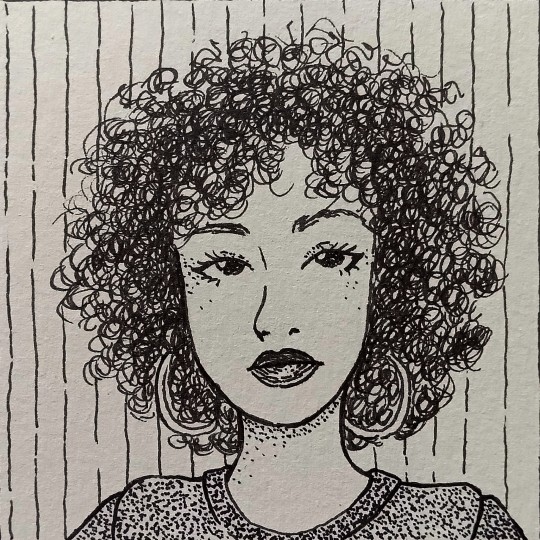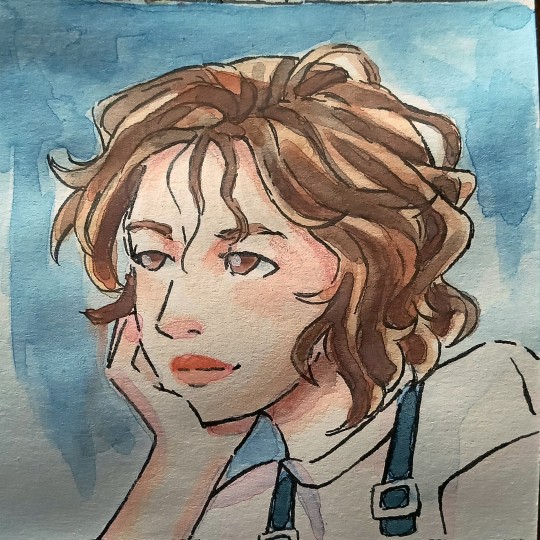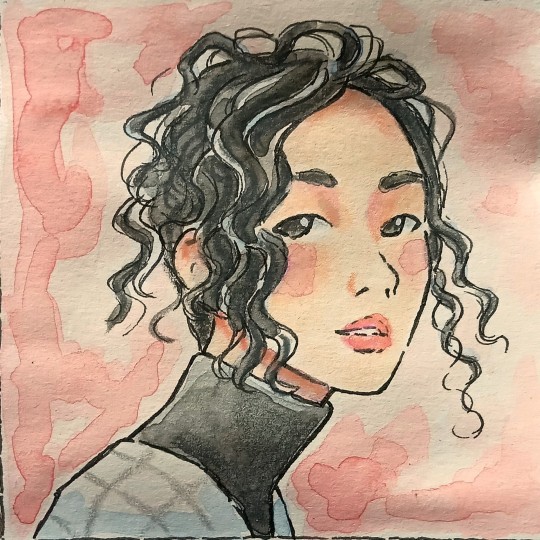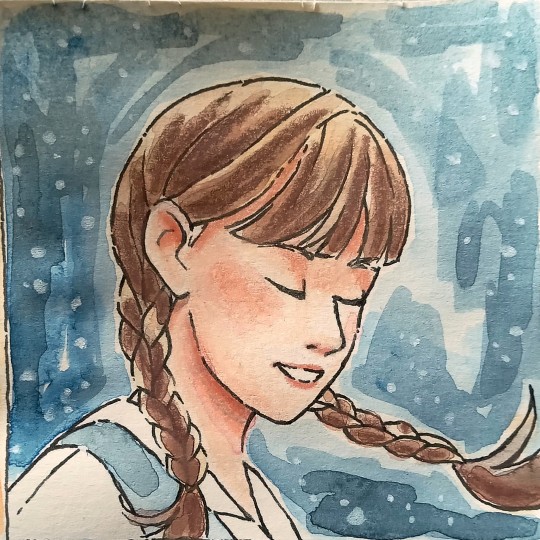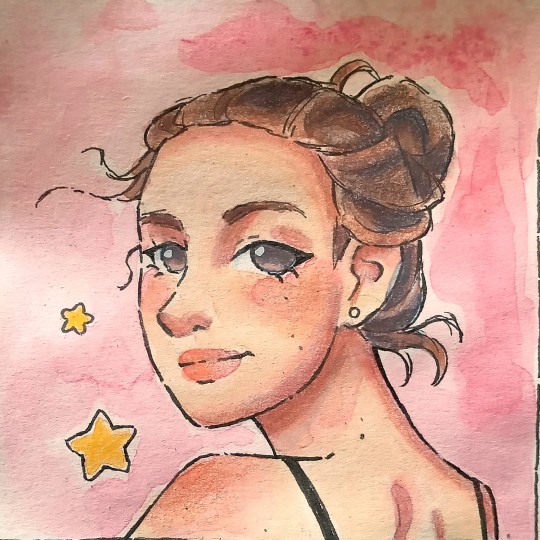#watercolor painting portrait
Explore tagged Tumblr posts
Text
Ripples of Creativity: How to Win a Water Art Challenge
“Thousands have lived without love, not one without water.” –W.H. Auden
Why Choose Water Art?
The ripples of life engulf us, embrace us as we cannot live without the droplets – that is water. The world of watert-themed art is as dynamic and fluid inspired by the incessant flow of life. For centuries, water in art is conceived through various mediums, and watercolor has been the most preferred mode of expression for the artists. Paintings in watercolor look ethereal and they show the transparent quality and the skill required to handle such delicate mediums. Whether you take part in a physical art contest or plan to showcase your work virtually, it pays to showcase your artworks in some of the coveted art galleries and exhibition platforms like that of TERAVARNA.

Online contests have taken this traditional medium to new heights for in-person exhibits and virtual showcases. So, are you going to be the next show-stopper? Find this blog rather useful to help you win a water art challenge with some basic pointers. Let your watercolor artwork reach global viewers, lifting your visibility as an artist. Know how you can breathe life into a watercolor painting portrait. We will show you how to blend artistic techniques, presentation style and strategies in this game.
So, let’s make the move!
Research the Iconic Watercolor Artworks: Study the Masters
You can always learn from the great artists and painters of water-themed concepts. Learning from the masters will show you the way. Study the iconic works of J.M.W. Turner, known for his atmospheric landscapes, or Winslow Homer, admired for his dynamic seascapes. They will guide you how to convey emotion and depth through water paintings. There are contemporary artists like Yuko Nagayama who blend conventional and modern techniques, or Jeannie Dickson who loves to explore virtual dimensions with watercolors. In-depth study of their style, choice of themes, techniques of art, brushworks will give you some valuable insights.
Here are some of the hands-on suggestions to make you take the right move:
1. Use Smart Techniques to Let Your Water Art Shine
If you are comfortable with working with watercolor medium then it is better you know the in and out of it, how to achieve a delicate balance between control and spontaneity. You can go on experimenting with any of these techniques such as:
Wet-on-wet: This will help you create smooth gradients and a sense of motion.
Dry brush: If you are painting portraits in watercolor this technique will help you add texture and finer details to the art.
Glazing: Trying to add depth? Like glazing to add layers of transparent washes to add luminosity.
2. Make Use of Colors Intelligently
Whenever we see a watercolor artwork, we are impressed by their vibrancy and fluidity. Use complementary and equivalent color schemes to evoke the best emotions. Browse works of the pioneers like John Singer Sargent, to see how he used subtle hues to create depth and realism in his portraits. Use textures and contrasts to help the viewers navigate through your work with hypnotic effects.
3. Make Engaging Compositions
To create impact on the judges and the viewers work on the composition in a nutshell. Make a rough draft of it and start building the artwork based on the cues. These are some useful rules to make your canvas look astounding:
Rule of thirds: The rule of thirds let you divide your canvas into thirds and arrange your primary elements along these lines to achieve the much-needed balance.
Leading lines: Help the viewers to see through your work using natural elements like rivers, walkaways, or light beams.
4. Balance Between Raw Details and Your Feelings
Always try to merge styles to create an authentic composition. It is good to show your technical skills with the realistic portrayals but you need to add your own expressions, like adding some abstract feelings to breathe life into your watercolor artwork. Abstract washes will help you add more depth and something very personal.
5. What the Judges Prefer in Water Paintings
Most jurors appreciate a perfect blend of technicality, smooth transitions, clean lines and precise details in water-based paintings. Make sure you take these points into consideration.
Play with light, shadow, reflections, and motions in your water art and go on creating hallmarks of water paintings. These paintings look more than just pretty – they tell us some unique stories. So, weave your story now!
6. Learn from the Past Winners
Study the past water art contests and competitions if you are thinking of some revered art platforms like TERAVARNA art gallery, and analyze winning watercolor artworks to understand what was so impressive about them. Make out the unique elements and creative approaches that made all the difference.
7. Just be Yourself: Don’t Imitate
You do not have to copy the masters, go with your own style and ideas. Judges always love to see authentic works compared to the imitation or replica ones.
8. Practice Makes Perfect
To hone your skill, make rough drafts and experiment with colors, styles, using bold color palettes and new-found techniques. That will make your watercolor artwork truly out-of-the-box.
Online Water Art Showcase: Some Pro-Tips
If you are going for a virtual showcase:
Use High-quality Images: Make sure your painting retains its original colors and details in digital format.
Add Catchy Descriptions: Create compelling details about your artwork by adding context, techniques, and real-life inspirations behind your paintings.
Use Virtual Mock Ups: Want to see how watercolor artwork might look in a gallery? Use digital mock-up software to see how they would look on a wall, or in a home setting.
Upgrade Social Media Presence: Get into some social media platforms like Instagram and Behance to share your artistic insights and connect with the art world and fellow artists.
Use of Technology in Water-Themed Art
No one ignores the role of technology in shaping the art world and experiences. For the budding artists or the proficient ones, use of digital tools can give the edge you are looking for. Follow these virtual geeks:
Digital Color Palettes: Procreate and Adobe Fresco will help you replicate the traditional watercolor effects virtually. Create a fusion kind of effect with this mode appealing to modern viewers.
Augmented Reality: Augmented reality or AR helps create an artificial sense of space adjusting light and depth for your water paintings. Make them suited to the viewer’s environment, or any space within or outside the gallery. They are fun!
NFTs for Water Art: For generating more online sales, turn your watercolor painting portrait or landscapes into NFTs to reach tech-savvy buyers.
Last but not the least, presentation is utmost for any water-themed painting. Leave a mark with high-resolution images and neat framing (for physical contests), to look more professional. Make ripples with your watercolor painting portrait that capture the true essence of creativity – fluid and dynamic, using these mind-blowing tips. Nothing can stop you.
So, jet, splash and paint!
0 notes
Text
Another little sketchbook piece, experimenting with low light and a glow effect. Been loving these light-focussed works lately!
🎵 Blue Wednesday - Cascadia ft. Dillan Witherow
#brbchasingdreams
prints | tutorials
#brbchasingdreams#watercolor#mixed media#traditional art#fantasy art#art#art style#drawing#painting#artists on tumblr#sketch#artist#illustration#art process#romantic#couple#lovers#love#romance#portrait#surreal#abstract#painting process#process#time lapse#my art#sketchbook#doodle
5K notes
·
View notes
Text

3K notes
·
View notes
Text

Blueberries
A gouache pet portrait of Khu, the bronze-winged pionus, I've had an absolute honour of painting for the one and only Nambroth! I can't say enough what an honour it's been to work with someone who's been inspiring me to make art ever since I can remember 💙 Thank you for your trust with this.
2K notes
·
View notes
Text

First new art of the year! Of course it's Nosferatu!
Watercolor, 9 x 12 inches JoJo Seames, 2025
#nosferatu#nosferatu 2024#count orlok#orlok#bill skarsgård#vampire#dracula#art#illustration#watercolor#painting#portrait#caricature#horror#horror art#jojo seames
588 notes
·
View notes
Text

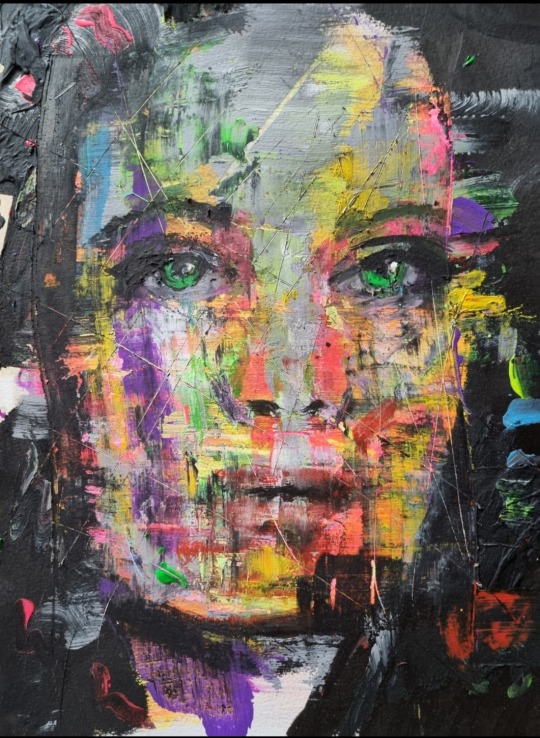
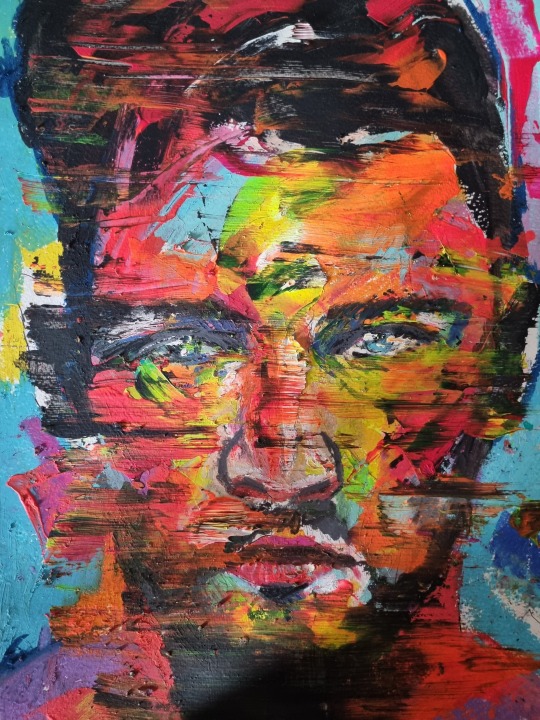

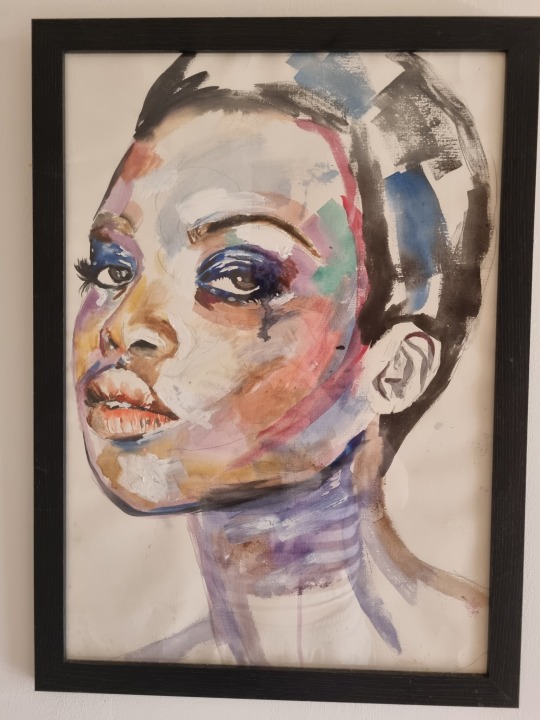
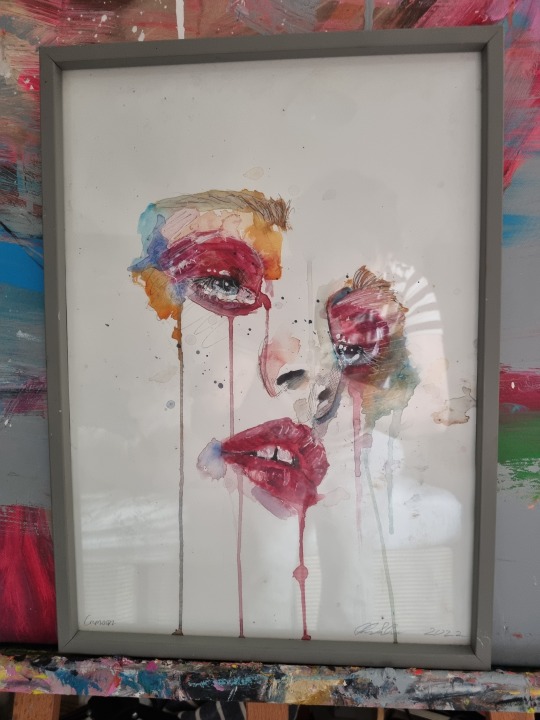

Oh how I've missed you tumblr
Some of my work over the past years, you can visit my Saatchi painting shop at www.saatchiart.com/chrissilver or alternatively have a look on www.chris-silver.com
1K notes
·
View notes
Text

Title: Portrait of a Girl with Summer Hat and Rose Artist: Isobel Lilian Gloag (English, 1865-1917) Date: unknown Genre: portraiture Medium: watercolor Dimensions: 50 cm (19.7 in) high x 40 cm (15.7 in) wide Location: private collection
#art#art history#Isobel Lilian Gloag#female artists#portrait#portrait painting#watercolor#British art#English art#19th century art#private collection
414 notes
·
View notes
Text

"Blue Ruin," 2024. Watercolor on cold press, 6x9"
Available via @everydayoriginal
405 notes
·
View notes
Text
I painted a Doberman named Wicked in watercolors!
Want a pet portrait done? My commissions are open!
I figured out a new technique with my watercolor brushes to make more realistic short/fine hairs. I am absolutely in love with this painting, I think it may be my best so far.
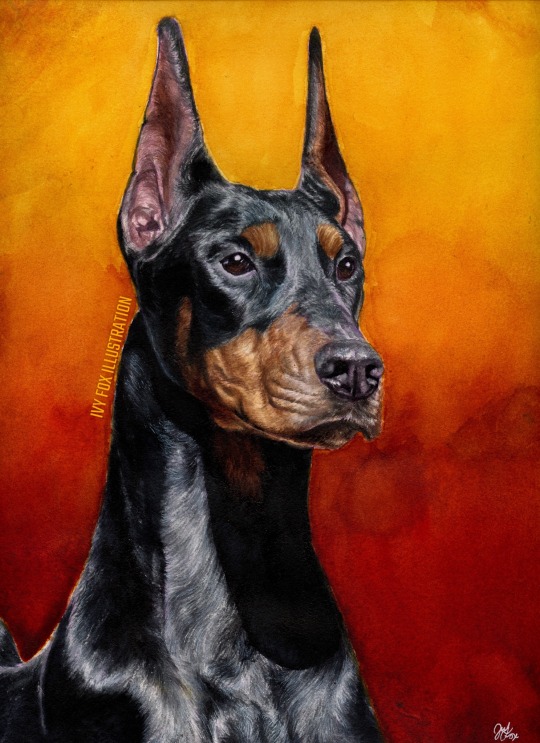
About my process:
So usually I’d use a cut up acrylic brush to get an uneven/jagged texture that creates strokes resembling when used to paint. This is great with long haired animals if they have flowing hair. With short haired dogs it doesn’t work as well because of the hundreds (thousands?) of tiny little strokes required to get the texture right. This time I used an actual watercolor brush (a smaller round brush) and would flick any excess water off so it was mostly dry (but with pigment) and splayed out kind of wildly (more or less depending on how sparse or heavy/dark I needed the hair to be in each area) I primarily used a Windsor & Newton Series-7 size 3 (finest sable). The paper is 9x12. Adjust your brush sizing accordingly. I used a white gel pen for corrections. Often it’s too bright for a particular area on a darker dog so I’ll often rub it in with my fingers to soften the contrast!
#doberman#art#dogs#pet portrait#watercolor#artists on tumblr#petblr#painting#show dog#dog show#dogsports#well bred dogs#Dobermann#art commisions#ivyfox-illustration#commissions open#animals#art tips#watercolor tips#fine art#traditional art
2K notes
·
View notes
Text

The Trap Arend Hendriks — 1930s
#art#Paintings:#painting#artist#artwork#fineart#acrylicpainting#oilpainting#watercolor#traditionalart#contemporaryart#modernart#artcommunity#abstractart#artcollective#artistsontumblr#aesthetic#portrait#contemporary art#Cute#cat
380 notes
·
View notes
Text

Brian Haberlin, "Beth (Beth In the museum)", 2024, watercolor on paper, series watercolor. Honolulu, Hawái, USA (19 de agosto de 1963). Brian Haberlin is an award winning American comic book artist, writer, editor and producer.
#brian haberlin#Beth#Beth In the museum#watercolor on paper#watercolor#archespaper#painting#art#american artist#black#dress#sitting#museum#woman#portrait#realism#figurative art#contemporary art#american art#painting within a painting
233 notes
·
View notes
Text
9 Tips for Painting Water with Realism: Mastering the Art of Watercolor Paintings and Artworks
Does an exquisite piece of art make you stop, stare, and wonder how the artist created such a gem through a delicate medium like watercolor?
Fret not! The painting of a serene lake might turn into a splash of blobs unless you learn the tricks of the trade. The creation of majestic oceans does take one to start with spilling tons of water on the paper and adding some brushwork here and there. Bob Ross says, “We don’t make mistakes, just happy little accidents.” So, let those splatters grow into realistic watercolor paintings with practice. Painting the flowy rivers and deep oceans won’t be a Herculean task anymore! Learn the step-by-step process of painting water with realism. In this blog, we will share 9 tips to help you master watercolor painting and artwork, whether you are a beginner or intermediate artist.

Know your materials.
Perfecting water art and creating a magnificent watercolor painting, requires appropriate tools and materials. Start by opting for handmade 300 GSM watercolor papers, which are thick and ideal for wet-on-wet techniques, standing multiple brushes without bleeding. Employ a variety of sable brushes such as flat, round, and fan brushes for painting large areas, ripples, and adding textures. Similarly, don’t forget to use high-quality watercolor paint or acrylics, for layering in your water art.
Grasp the wet-on-wet technique.
The ‘wet-on-wet technique’ applies wet paint to a wet surface, creating smooth transitions, bleeding, and blending. Start by dampening the surface and adding the first layer of paint with a clean flat brush. Using horizontal strokes, create an even appearance for the oceans and seas. Let those watercolor painting portraits capture the elegance of the subjects.
Set the base coat.
Using the wet-on-wet technique helps to set the base coat. Lay down the base coat with the flat brush and employ shades such as turquoise green, celeste, aquamarine, or sea green. This is the primary step for creating great watercolor artwork.
Add layers gradually.
Knowing how to layer is a significant step in watercolor painting. The glazing method helps to apply diluted paint over the dried paint layer. Create a transparent effect for shimmering water and add a second layer of dark colors to intensify the background or represent depth. The portrayal of the deep sea will employ shades such as azure, deep sea blue, etc. Then you can layer them gradually one after the other.
Learn the graded wash technique to blend shallow and deep waters.
Shallow waters are usually on top, depicted with lighter tones while deep waters employ darker tones. Blend these two using a fan brush in your watercolor artwork, through the graded wash technique to create the gradient effect. Layer the different blue tones from dark to light. Remember to bring uniformity to your water painting by moistening your paper with adequate clean water.
Allow overlapping of colors to create effects followed by lifting and layering.
To give your water artwork a realistic touch make the colors overlap effortlessly. For instance, if you are painting objects in your waterbody, let some blues of the water blend into their shadows. Then gently remove some paint off the wet surface using a round brush and create dimensions, highlights, and reflections on your water painting. The overlapping technique is also useful for depicting movements on the water surface.
Use the wet-on-dry technique for the subjects.
Employ the wet-on-dry technique for subjects in your water paintings. Objects such as marine wildlife, boats, and islands will appear more defined against the water backdrop by applying paint on the dry surface. Use round brushes to highlight the soft and hard edges. Create stunning watercolor painting portraits by blending colors seamlessly.
Create water reflections in the right direction.
For your water art, it is important to paint the reflections of objects in a downward direction. Make them look real by softening the edges with the help of a damp brush.
Control the brush movement and employ varied strokes.
The creation of a magnificent water painting involves the right brush movement. Use horizontal strokes for the water gradient and smaller circular strokes for depicting the waves. Demonstrate the water ripple effect through a pointed brush. Further, increase the intensity, color, and contrast to highlight movement. The addition of thick paint in the drying area helps portray strong outlines.
Voila! You have the 9 tips to turn your happy little accidents into a marine masterpiece. As water flows freely, let your base coats do the same and add some sparkle of waves on the surface. Remember watercolor painting portraits can be a fusion of color and light, depicting your thoughts along with the subject. Be an expert in watercolor artwork now through your water art!
0 notes
Text
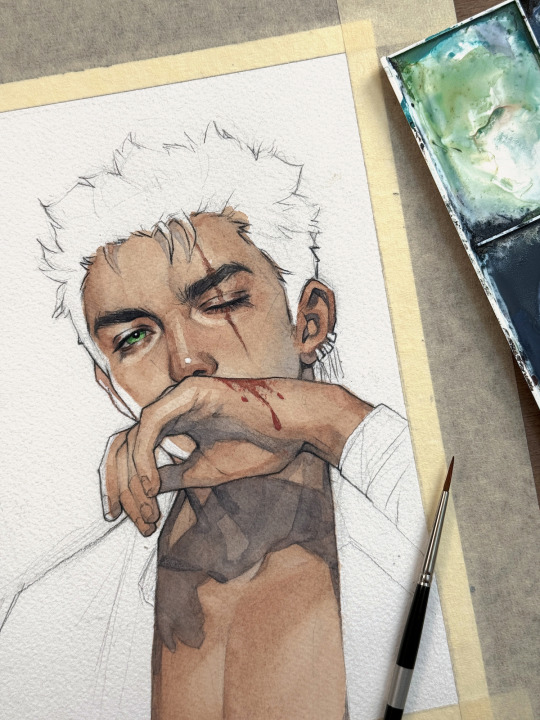
roronoa zoro, but🫦🫦 #brbchasingdreams
prints | tutorials
#brbchasingdreams#artistic#art#illustration#drawing#painting#artists on tumblr#watercolor#traditional art#artist#sketch#artwork#my art#drawings#art tag#fan art#zoro#one piece#roronoa zoro#luffy#straw hat pirates#anime art#art style#portrait#skin#male
3K notes
·
View notes
Text

In a white chiton, 1893
By Viktor Bobrov
#art#painting#fine art#classical art#watercolor art#russian art#russian artist#watercolour#watercolor#watercolour art#portrait#female portrait#greece#rome#european art#19th century art#russian painter
287 notes
·
View notes
Text

vulpes
#art#vulpes inculta#fnv#fallout new vegas#caesar’s legion#artists on tumblr#i needed to make more trad designs for my portfolio but I also miss drawing fnv stuff so uhhh vulpes portrait.#spitshading with watercolors can be so fun if you simply don’t think about all the toxic paint compounds you’re putting in your mouth
277 notes
·
View notes

